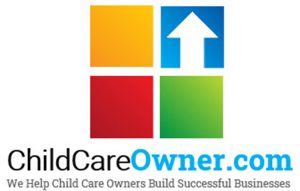Operating a Child Care Business as a Non-Profit Organization Advantages and Disadvantages – And What Happens With a Transfer

When starting a child care business, owners can select from different operating structures – sole proprietor, partnership, a for-profit corporation or non-profit corporation. For simplicity, the various operating structures can be divided into two categories – for-profit and non-profit. The majority of child care businesses operate as for-profit corporations. However, child care businesses – large and small – operating as a non-profit organization is also very common.
The primary benefits of operating a child care business as a non-profit include:
No Taxes. Nonprofit organizations do not pay federal or state tax income taxes.
Donations. Nonprofit organizations are considered to be charities and thus can receive donations and grants.
Liability Protection. Like other forms of corporations, non-profit corporations provide personal liability protection for members of the organization.
The primary disadvantages of operating a child care business as a non-profit include:
Formation complexities. Setting up any form of corporation – for profit or not, can be expensive, time-consuming, and complex.
Compensation Restrictions. Directors may not receive compensation for their service.
Cannot be sold. Non-profit organizations cannot be sold. Should some or all assets of the organization be sold, the proceeds must be donated to another nonprofit organization.
Several times a year, I receive inquiries from child care owners looking to sell their non-profit child care business. They are often surprised and very disappointed to learn that they cannot sell their non-profit child care business. Well, technically they can sell the business – they just cannot receive any of the money.
How can someone operate a non-profit child care business for years and not realize it cannot be sold? It is simple. The decision to operate as a non-profit child care business was made years often decades ago. The ability to receive donations and grants often played a major role in the decision to operate as a non-profit. The time constraints of operating a child care business coupled with the lack of grant writing knowledge resulted in limited or no additional requests for funds from grants or donations. Over time, the child care owner forgets about the other aspects of operating a non-profit organization.
If the non-profit child care business cannot be sold, there is no need for the assistance of a child care broker – right? The owner of the child care business can still benefit from working with a broker that specializes in transferring child care businesses. Here’s how:
Arrange a transfer. The child care owner still wants to retire or just do something other than continue to operate the child care business. A broker specializing in child care can assist with locating another non-profit organization to take over operations.
Protect confidentiality and business. The potential transfer of the child care business to another non-profit must be confidential just like the transfer of a child care business to a for-profit buyer. Beaches in confidentiality result in the loss of parents (children) and employees. The loss of enrollment, of course, decreases revenues and the likelihood of arranging for another non-profit to take over the child care business. No organization, for-profit or non-profit wants to take over a child care business that has lost enrollment and qualified teachers from it becoming known in the community the child care owner is leaving the business. The negative impacts from breaches in confidentiality are very hard to overcome and can lead to the child care business closing. No child care owner wants to see the child care business they have spent so much of their life starting and growing – close.
Non-profit organization screening. Child care owners always want to find the “perfect” buyer to take over their business. Screening potential non-profit organizations for the compatible mission, culture, and philosophy is critical to ensure the continued success of the child care operation after the transfer. A broker that specializes in child care can approach other non-profit organizations and access the desire for expansion and compatibility without divulging which child care business might be available. The child care business broker will be able to widen the search by contacting local, state, regional, and even national non-profit organizations. The broker will require potential organizations that express interest and would be a “good fit” to execute a confidentiality agreement before revealing which child care business is available. If a child care operator approaches a non-profit organization directly, they have no confidentiality. Moreover, the child care owner often lacks the skills, knowledge, and objectivity necessary to represent the organization.
Locate an individual to take over. Most child care owners want to see their business continue to provide quality child care. A broker that specializes in child care can assist with locating, and screening individuals who could become a board member and take over the operation of the child care business.
Lease or transfer of real property. Often the real property (building and land) the child care business occupies is not owned by the non-profit corporation. In many cases, the real property is owned by the child care operator personally and leased to the business. A broker that specializes in child care can assist with evaluating and obtaining the fair market value of the real property either with a sale or lease.
If you are operating a non-profit child care business and thinking about retirement or the next chapter of your life, please give me a call. I cannot provide you with legal, accounting, or tax advice but I can help you explore the options for confidentially transferring and arranging for the continued, successful operation of your non-profit child care business. All conversations are confidential and no obligation.





